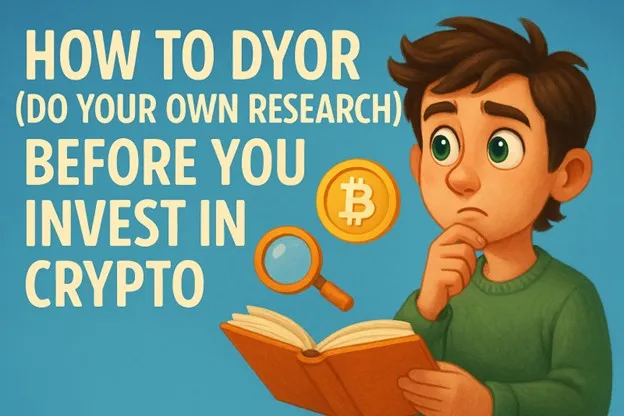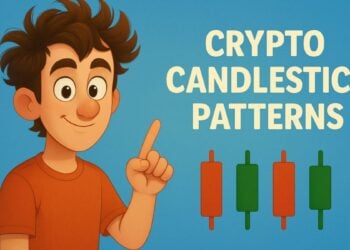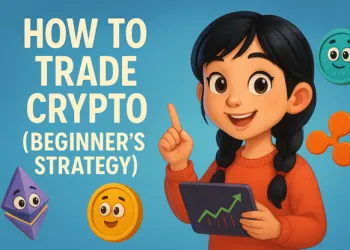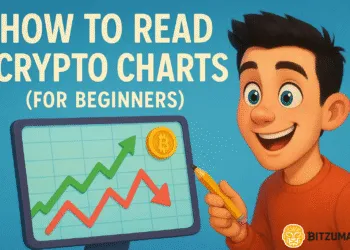In crypto, you’ll hear it all the time: “DYOR!” – Do Your Own Research.
But what does it actually mean?
In a world full of hype, influencers pushing coins, and viral trends that can vanish overnight, DYOR is your strongest defense. It’s the skill that separates the mindful investor from the exit liquidity.
Doing your own research doesn’t mean you need to be a blockchain developer or financial analyst. It means learning how to:
- Ask the right questions
- Spot red flags
- Understand the basics behind a project before putting your money in
Because let’s be honest — if you’re investing based only on a TikTok video or a tweet, you’re gambling.
And in crypto, gambling usually doesn’t end well.
DYOR isn’t about being perfect. It’s about protecting yourself from the projects that sound great… but aren’t.
New to trading? Start with: How to Read Crypto Charts (For Beginners)
What Does “Doing Your Own Research” Actually Mean?
If you’ve spent more than five minutes in a crypto community, chances are someone has told you to “DYOR.”
But the truth is, most people don’t know what that actually involves.
Doing your own research doesn’t mean spending hours reading whitepapers in technical jargon or learning how to audit smart contracts. It simply means this:
Before you invest in a project, you take the time to understand what it is, who’s behind it, and why it might succeed — or fail.
It’s about stepping back and asking:
- Does this project solve a real problem?
- Who’s building it? Are they trustworthy?
- How does the token work? What’s the incentive model?
- Is the community real — or just bots and paid shillers?
You’re not looking for perfection. You’re looking for clarity.
The crypto market is fast, emotional, and full of FOMO. DYOR helps you slow things down — and make decisions based on facts, not tweets.
Remember: If you don’t understand where your money is going, you’re not investing — you’re donating.
5 Key Things to Research Before You Invest
Now that we’ve defined what DYOR is (and what it isn’t), let’s break it down into practice.
Here are five essential elements to look into when evaluating any crypto project — from Bitcoin alternatives to brand-new presales.
- Understand the Project’s Purpose
Ask yourself: What problem is this project trying to solve? And — more importantly — does that problem really exist?
Some tokens are created with a clear use case: improving scalability, enabling DeFi access, powering GameFi ecosystems.
Others… well, they’re mostly memes with vague promises.
If you can’t explain what the project does in one sentence, chances are it’s not ready for your money.
Red flag: Buzzwords like “revolutionary,” “next-level AI,” or “community-driven” with no real explanation.
- Who’s Behind the Project? (The Team)
Look into the founders, developers, advisors. Are they:
- Publicly doxxed?
- Linked to credible past projects?
- Active on LinkedIn or GitHub?
If the team is anonymous, that’s not an automatic dealbreaker — but it raises the bar. In that case, check what they’ve built, how often they communicate, and how the community responds.
A solid team usually isn’t hiding. They’re proud of what they’re building.
- Analyze the Tokenomics
Not all tokens are created equal. You need to understand:
- Total supply: How many tokens exist overall?
- Circulating supply: How many are in the market now?
- Allocation: How much does the team hold?
- Unlock schedules: Are there vesting cliffs or will the team dump in 6 months?
Tokenomics determine whether a token is scarce and valuable — or inflationary and destined to bleed.
Pro Tip: A project can have amazing tech, but if tokenomics are broken, price action will suffer.
- Check the Community & Ecosystem
A vibrant, organic community is a powerful indicator of project health.
But don’t let big numbers fool you — many Telegram groups are inflated with bots, and Twitter likes can be bought.
Here’s what matters more:
- Is the community active and engaged?
- Do they ask real questions — or just post “to the moon” memes?
- Is there a healthy balance of critique and excitement?
Also, look at partnerships: are they real, or name-drops with no evidence?
- Roadmap, Delivery & Transparency
Every project has a roadmap — but not all stick to it. Check whether the team:
- Shares regular updates
- Meets deadlines (or at least communicates delays)
- Offers open communication channels (e.g., AMAs, Discord)
Projects that disappear for weeks during a bear market? Usually not worth your trust.
If it’s all hype and no shipping, be cautious.
Tools That Help You DYOR (Without Being a Developer)
You don’t need a PhD in blockchain to do your own research — but having the right tools makes the job easier (and way faster).
Here are some essential platforms to bookmark and start exploring
CoinMarketCap & CoinGecko
Two of the most popular crypto directories. Use them to:
- Check price history, market cap, and trading volume
- Explore tokenomics, contract addresses, and exchange listings
- Spot any red flags in the “token allocation” and “fully diluted valuation”
Always cross-check a project on both — some info may vary or be outdated.
TokenSniffer (or similar contract scanners)
Great for scanning newly launched tokens, especially on Ethereum or BNB Chain.
It can help identify:
- Contract risks
- Ownership status
- Potential rug-pull indicators
Useful for meme coins or low-cap tokens that haven’t been vetted yet.
| Tool | Purpose | Difficulty | Free? |
| CoinGecko | Price, tokenomics, supply info | Easy | Yes |
| TokenSniffer | Scam check for new tokens | Medium | Yes |
| GitHub | Dev activity & commits | Advanced | Yes |
| DappRadar | Explore dApps & ecosystems | Easy | Yes |
| Twitter/X | Community vibe & updates | Easy | Yes |
Twitter, Discord & Telegram
DYOR is also about watching how people talk about the project.
Check:
- How often the team communicates
- How the community reacts
- Whether the vibe is organic or just bots and hype
Healthy communities allow questions. Toxic ones delete them.
GitHub
If the project is open-source, GitHub lets you:
- See if the code is actively being updated
- Verify if it’s a fork of something else
- Track developer activity and consistency
You don’t need to read the code — just check if anything is actually happening.
Optional: DappRadar, Messari, DeFiLlama
These are great for digging deeper into DeFi, NFT and Layer 1 ecosystems — especially if you’re investing beyond just tokens.
They offer:
- Real-time data on active wallets, TVL (total value locked), usage trends
- Sector performance (like GameFi, AI tokens, etc.)
DYOR becomes easier once you know where to look. With these tools, you’re already ahead of 90% of retail investors.
Common Red Flags to Watch Out For
Even with all the tools in the world, your best defense is still your instinct.
If something feels off — it probably is.
That said, here are some of the most common warning signs to look out for when researching a project:
- A Roadmap That’s All Hype and No Substance
If the roadmap says things like “Build a metaverse” or “Launch staking” — but gives no dates, no details, and no real milestones — that’s a red flag.
Vague promises with zero delivery usually mean they’re buying time… or faking ambition.
- Anonymous Team with No Digital Footprint
Some great projects have anonymous founders (like Bitcoin), but most scams do too.
If there’s no way to verify who’s behind a project — and no transparency, no LinkedIn, no interviews, and no GitHub activity — stay alert.
You don’t need to know their address. But you should know if they’ve built anything before.
- Token Allocation That Favors Insiders
Always check:
- How much of the supply is reserved for the team
- Whether there’s a vesting schedule
- If the token unlocks all at once — or gradually over time
If the team controls 50%+ of the supply and can sell anytime? That’s not an investment. That’s an exit trap.
- A “Too Good to Be True” Narrative
If a project promises:
- Guaranteed returns
- 100x with no risk
- “Passive income daily” with zero effort
…you’re likely looking at a Ponzi or low-effort money grab.
In crypto, volatility is real. Nothing is guaranteed.
- No Actual Product or MVP
Has the project launched anything?
If you can’t:
- Test a demo
- View the app
- See any GitHub commits
- Or interact with anything they’ve built
…it’s likely all fluff, no function.
If after 6+ months there’s no product and no progress… ask yourself why you’re still watching.
FAQs on How to DYOR
What’s the best site to start researching a crypto project?
CoinGecko and CoinMarketCap are two of the best places to begin. They show tokenomics, price history, market cap, and links to the project’s official channels. From there, dive deeper with TokenSniffer, Twitter, or GitHub if needed.
Can I trust influencers or YouTube videos for DYOR?
They can offer insights — but don’t rely on them alone. Influencers are often sponsored to promote tokens. Use their content as a starting point, then do your own validation.
Is it safe to invest in a project with an anonymous team?
Not always. While some great projects (like Bitcoin) started anonymously, most scams are anonymous too. If the team is hidden, you need stronger signals of trust, delivery, and transparency before risking money.
How much time should I spend on DYOR?
It depends. For small investments, 15–30 minutes might be enough. For bigger bets, spending hours — or even days — researching is a smart move. DYOR is like seatbelts: it feels unnecessary until it saves you.
Conclusion – DYOR Isn’t Optional, It’s Survival
Doing your own research isn’t about becoming an expert — it’s about not being the last person holding the bag.
Crypto is full of exciting innovations… but also traps disguised as opportunities.
When you DYOR, you build the habit of asking questions, spotting value, and protecting yourself from the noise.
So next time a coin starts trending on Twitter or your friend says “this is the next 100x” — pause.
Research. Question. Think.
You can’t control the market. But you can control your decisions.

















